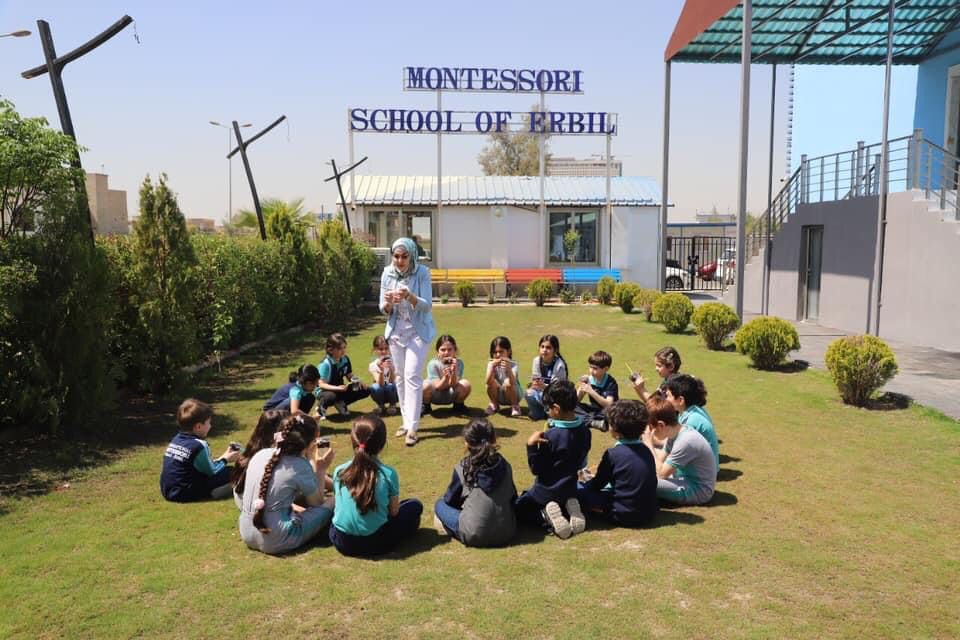Curriculum

The Montessori Curriculum
How Does the Montessori Curriculum Work?
Practical Life, Sensorial, Mathematics, Language, and Cultural Studies are the five core study areas offered by the Montessori curriculum. Each field of study is comprised of a progression of increasingly complex educational materials. Children move through the Montessori Curriculum at their own pace, depending on where they are in their development and what they are interested in.
Through introductory lessons, Montessori educators introduce children to the names and learning outcomes of each Montessori material. After a key lesson, the children independently practice, explore, and make connections with the key learning outcomes using Montessori materials.
During this period, Montessori educators observe how children are learning and record their development. As there is a direct link between a child's sense of independence and his or her ability to learn and remember new skills and information, a teacher will only step in if necessary to help the child become more independent. When a child is ready to advance to the next level, new lessons are provided. Through repetition and practice, children learn the basics of each area of the curriculum and master the order of the Montessori materials.
Key Curriculum Areas
Practical life: Independence, social skills and care for the environment
Sensorial: Colours, shapes, textures, weights, dimension, discrimination and distinguishing between smells, taste and sound
Mathematics: Numbers, quantities, counting, addition, subtraction, decimal system, multiplication and division
Language: Oral language, phonics, letter formation, sentence structure, vowels and consonants, writing, reading and early literacy skills
Culture: Geography, botany, zoology, science, history, music and art
The Five Areas of the Montessori Curriculum
Practical Life
The Montessori Practical Life Curriculum incorporates daily-life exercises and activities. These activities foster independence, concentration, and fine motor skills in children. Taking, preparing food, learning grace and courtesy, and cleaning are examples of typical practical life activities.
Examples of materials and activities include:
Spooning
Tonging
Threading
Sweeping
Sensorial
Sensorial activities help children refine their senses of sight, touch, sound, smell, and taste so they can organize sensory impressions and comprehend the world. Children learn about similarity and difference, dimensions, colors, and shapes, as well as how to differentiate between smells, tastes, and sounds through the use of sensorial materials. In addition to preparing children for mathematics, language, and geometry, sensory activities teach children how to categorize and sort.
Example of materials and activities include:
Pink Tower
Colour Box
Geometric Solids
Trinomial Cube
Mathematics
Through hands-on learning, the Mathematics Curriculum teaches children to comprehend abstract mathematical concepts and relationships. With the help of Montessori materials, children learn to count, recognize and match numbers to their amounts, make connections between decimal numbers and symbols, and understand how to add, subtract, multiply, and divide.
Example of the materials and activities include:
Numerals and Counters
Hanging Bead Stair
Teen Boards
Hundred Board
Language
The Montessori Language Curriculum equips children with the knowledge and skills necessary to develop their vocabulary and language comprehension. Using Montessori language materials, the skills required for reading, writing, and oral language are developed through hands-on practice. Children are taught letter sounds (phonics), letter identification and formation, how to combine sounds to form words, how to construct simple sentences, and how to hold a pencil correctly. Oral language skills are developed through daily social interactions, group experiences, and etiquette lessons.
Example of the materials and activities include:
Sandpaper Letters
Moveable Alphabet
Metal Insets
Three Part Cards
Culture
The Culture Curriculum encompasses a vast array of disciplines, including Geography, Botany, Zoology, Science, History, Music, and Art. Through cultural exploration, children gain an understanding of their community, the world, and their social responsibilities. Children are taught how to deal with differences, how to appreciate music and art, and how to care for the environment.
Examples of materials and activities include:
Land and Water Forms
Continent Boxes
Life Cycle Puzzle and Activities
Map Cabinet





